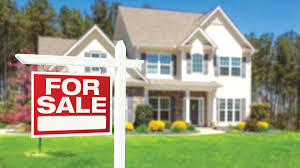Use March to Shed Some Light
Thursday, March 28th, 2013There’s a reason they call it March Break. It’s around the time when children and adults yearn for milder climates and a reprieve from the cold, dull grey of winter.
If travelling to warm, sunny spots is impossible at this time of year, consider brightening the interior of your home or office with lighting. But not just any old lighting. We’re talking about eco-lighting.

Lighting your interior space the green way is a good first step on the path to environmental awareness and action. It’s comparatively inexpensive to other eco initiatives so if this is your client’s first foray into going green, it’s a good way to go. Keep in mind, too, that their eco efforts are likely to pay off in reduced energy bills so the return on investment is well worth it.
We all know about incandescent light bulbs, those energy guzzling lights that cast a beautiful, warm glow unparalleled, some say, by compact fluorescent lamps (CFL) and LEDs. Many governments have passed measures to phase out incandescent bulbs in favour of more energy-efficient choices. In Canada, that ban was scheduled to take effect in 2012, but the government has postponed it until 2014.
Incandescents waste energy because they need to heat up substantially to operate, have a short life span and need to be repeatedly replaced and discarded, which jams up landfill sites.
CFLs have long been touted as the ideal replacement for incandescent light bulbs. They use up less than 25 per cent of the energy required to run incandescents and are known to last up to ten times longer. While these benefits are considerable, these lights are far from perfect. The bulbs issue a harsh light that doesn’t compare to incandescent. More importantly, they contain mercury, a toxic substance and they should be specially disposed of, a fact of which many consumers aren’t aware.
LEDs (light emitting diodes)are viewed as the next generation in home lighting as they’re more energy efficient than CFLs, burn little heat and contain no poisonous gases. Their life spans are remarkable, lasting up to 35,000 hours or about 16 years based on six hours of daily use.
LED lamps can be easily recycled with regular glass products and should they end up in a landfill heap, no lasting environmental damage will be sustained as they contain no toxic chemicals. Finally, unlike CFLs, LEDs have improved their technology so that light bulbs are available in warm, cool and neutral tones. They also come in many different models and styles.
LEDSare made using as many as 180 bulbs per cluster, and encased in diffuser lenses which spread the light in wider beams. When they were first produced they were limited to single-bulb use in instrument panels, electronics, pen lights and, more recently, strings of indoor and outdoor Christmas lights.
On the down side, LEDs are not known for their brightness. And they’re expensive starting at around $35 and up. This expense when compared with incandescent and CFL lighting seems to be the major sticking point right now in the market. Still, consumers are beginning to understand how economical LEDs are to operate. And as their price continues to drop many are warming to the idea of installing LEDs in their homes and offices.
A cost comparison by www.eartheasy.com on running the three main types of lights for 50,000 hours shows incandescents at over $350, CFLs at nearly $90, while LEDs come in at almost $66.
Knowing LEDS cost more upfront isn’t as painful when you consider the long-term savings you gain in running them. Think of it as the price of shedding new light onto your life.
The National Association of Green Agents and Brokers (NAGAB) provides a Greenbroker and Greenagent certification program to Realtors across Canada. To get more information or to sign up for a course, visit www.nagab.org. Elden Freeman M.E.S., AGB, broker is the founder and executive director of the non-profit organization. 1-877-524-9494 Email elden@nagab.org.



